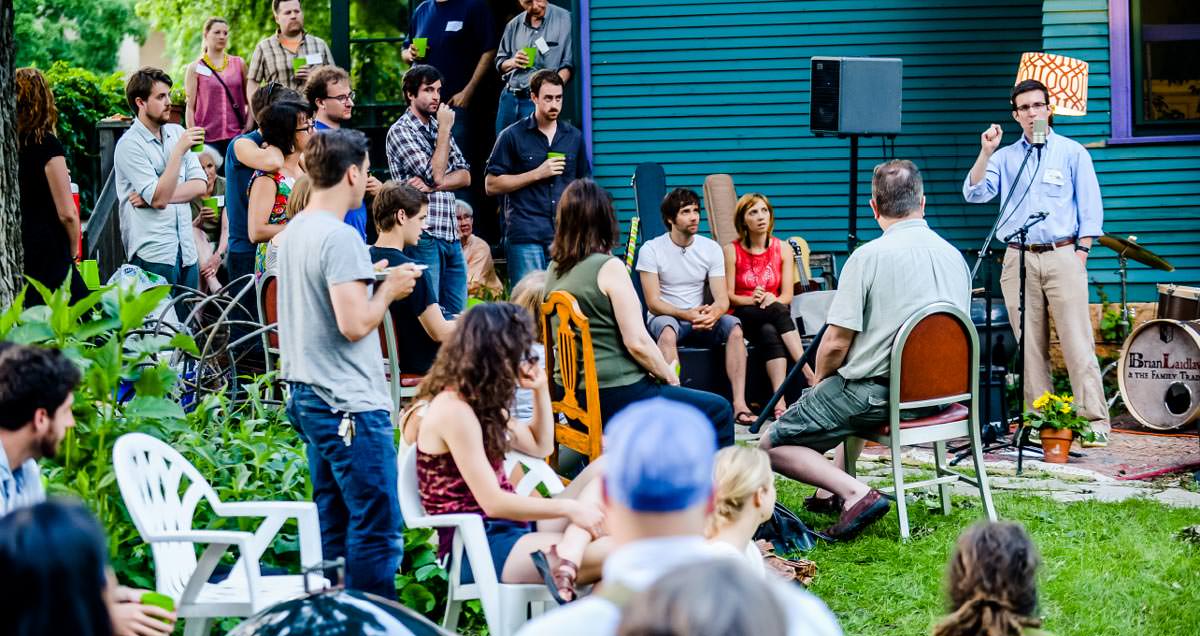Bacon Seeds and Petunia Porkchop
posted: Friday, December 21st, 2012By Emily Torgrimson
We were inspired by Organic Valley‘s Earth Dinner cards, which encourage all of us to celebrate the earth one dinner at a time – and to ask each other questions all about food. This card struck us:
Is there anyone in your family history who was a farmer? Describe the work they did or the work of someone in your life who is associated with producing food.
I remember when I realized where my food came from. We had just moved from Hong Kong, a city of seven million, to a farm outside Lanesboro, Minnesota, a city of seven hundred.
The farm had once been a working farm, but the land and homestead were sold separately when my folks bought it [sight unseen, by fax machine]. But my parents continued the land’s tradition of raising food. They worked together to start a massive garden in the crook of the valley. My dad lovingly describes my mom [the daughter of farmers] as a landscape painter, whose preferred medium is plants. They’d work for hours in the summer evenings and weekends, planting, weeding, harvesting, and preserving.
And aside from vegetables and a small flock of chickens, we raised four pigs as an experiment. My seven-year-old brother and I wanted to name them Porky and Petunia. My dad’s response? “Sure you can name them, but you should name them Pork Chop and Bacon, Sausage and Ham.”
When we moved to the farm, we had absolutely no idea how food came to be food – in anticipation of the move, my brother had even asked if we could plant bacon. So as those piglets grew into pink and black spotted beasts, we knew in theory what their fate would be come winter. But we still hadn’t connected that knowledge with the reality that they would be the meat on our plates come spring.
Fast forward to Easter dinner with my aunt, who was visiting from New York. She looked over the spread and asked, “Are these Torgrimson potatoes? Is this Torgrimson lettuce?” And as we nodded, and dug into our plates, she asked, “Is this Torgrimson ham?” Gulp.
I pushed my plate away in shock, and my brother followed suit.
But he took a swallow, and then he pulled his plate back, saying, “Well, I guess it’s like seeing ‘em again.” We had come full circle – from imagining harvesting bacon seeds to fully realizing what it takes to put meat on the table.
I remember feeling hurt when they turned up on my plate, that Porky and Petunia had become our Easter dinner. But years later, I feel incredibly lucky for having such a close bond to my food. Today it’s an organic certified farm, and my parents have grown garlic for Seed Savers Exchange, as well as squash, tomatoes, peppers, onions, greens, lettuce, and other produce for Eat for Equity feasts. That connection to food and place – it was the incredible gift that my parents gave to us when they transplanted their family from southeast Asia to the middle of nowhere, and dug into making it home.
That bond to place and food is something we hope we foster with Eat for Equity – by connecting our food to a cause, and connecting food to a place and season. We prioritize organic and local food in our community meals, and for us this is a deep value around investing in our local communities and farmers. When you dig into a forkful of buttery salad greens that have never been refrigerated, that were picked the day before, you can ask, “Are these Torgrimson greens?” When you bite into a tender, juicy shepherd’s pie, you can ask, “Is this Tienter beef?” When you sip on spicy, creamy chai, you can ask. “Is this Organic Valley milk?” And you can bring your plates a little closer, knowing that the food on your plate feeds you, as well as your community.
posted in by: eating




